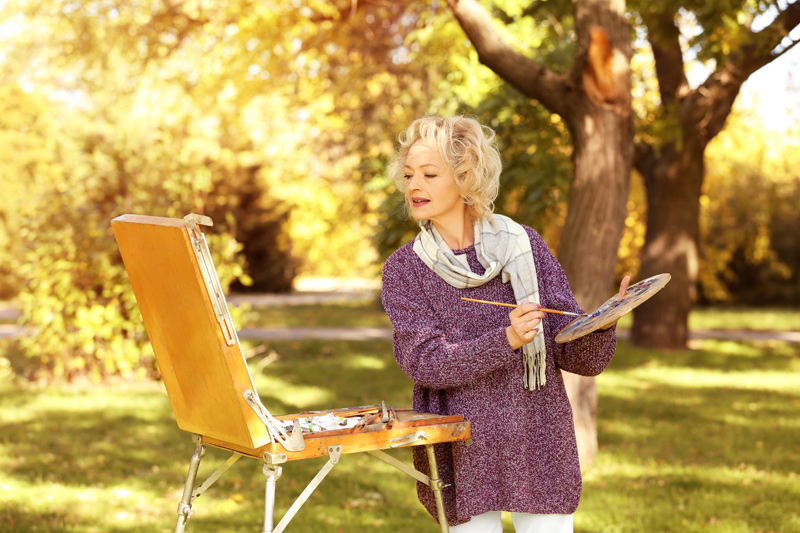Sunless Tanning Pros and Cons

Since sunless tanning creams hit the market years ago, they have provided a much nicer look than in the old days when our skin would streak and then turned an orangey-brown. The results are much better today, especially with the spray on products used in spas and salons. Young women are attracted to these products and older women use them too, primarily because of their fear of too much sun and skin cancer.
What is unfortunate is that most of us associate a suntan with good health, when in reality a tan is our skin’s response to sun damage. The color comes from the production of melanin, a brownish pigment. In sunless tan products, a chemical called dihydroxyacetone is used which, through a chemical reaction, turns our skin a tan-like color. This color fades as dead skin cells flake off. The chemical dihydroxyacetone has been around a long time and was approved by the FDA 30 years ago. Like any other chemical, too much is just not a good thing.
During the past several years, the use of these sunless tanning products has increased with both men and women of all ages. The irony is that these tanning products should help us avoid the risk of too much sun, but, with the false notion that we have “the base of a tan,” we don’t use sunscreen, get a sunburn, and increase our chances of getting skin cancer.
Studies have shown that indoor tanning is associated with skin cancer and accelerates the aging of our skin. Comparatively speaking, it is healthier for us to use a cream or lotion or spray on tan. Radiation from just 10 indoor tanning sessions in two weeks can suppress a person’s cancer-fighting immune system. Despite decades of public health efforts to educate us on the importance of protection from UV radiation, over 30 million people tan indoors a year in the United States.
Most of the users of indoor tanning beds are women and teens. A 2014 study found that newer tanning beds were not safer than older tanning beds, so don’t be fooled by the ads. In fact, in numerous states and foreign countries, the use of tanning beds is prohibited for certain younger age groups.
Another option on the market is the sunless tanning pills. These tanning pills, which contain the color additive canthaxanthin, are not safe. Studies show that large amounts of these pills can turn a person’s skin orange, cause hives, and cause liver damage and impaired vision, making these pills not a safe option and should be avoided..
I hate to say it, but when I now see a woman with a lovely tan, what first comes to mind is not how great she looks, but rather the same thought that occurs to me when I see someone smoking, “I hope she realizes what a terrible health risk she is taking.”
What is unfortunate is that most of us associate a suntan with good health, when in reality a tan is our skin’s response to sun damage. The color comes from the production of melanin, a brownish pigment. In sunless tan products, a chemical called dihydroxyacetone is used which, through a chemical reaction, turns our skin a tan-like color. This color fades as dead skin cells flake off. The chemical dihydroxyacetone has been around a long time and was approved by the FDA 30 years ago. Like any other chemical, too much is just not a good thing.
During the past several years, the use of these sunless tanning products has increased with both men and women of all ages. The irony is that these tanning products should help us avoid the risk of too much sun, but, with the false notion that we have “the base of a tan,” we don’t use sunscreen, get a sunburn, and increase our chances of getting skin cancer.
Studies have shown that indoor tanning is associated with skin cancer and accelerates the aging of our skin. Comparatively speaking, it is healthier for us to use a cream or lotion or spray on tan. Radiation from just 10 indoor tanning sessions in two weeks can suppress a person’s cancer-fighting immune system. Despite decades of public health efforts to educate us on the importance of protection from UV radiation, over 30 million people tan indoors a year in the United States.
Most of the users of indoor tanning beds are women and teens. A 2014 study found that newer tanning beds were not safer than older tanning beds, so don’t be fooled by the ads. In fact, in numerous states and foreign countries, the use of tanning beds is prohibited for certain younger age groups.
Another option on the market is the sunless tanning pills. These tanning pills, which contain the color additive canthaxanthin, are not safe. Studies show that large amounts of these pills can turn a person’s skin orange, cause hives, and cause liver damage and impaired vision, making these pills not a safe option and should be avoided..
I hate to say it, but when I now see a woman with a lovely tan, what first comes to mind is not how great she looks, but rather the same thought that occurs to me when I see someone smoking, “I hope she realizes what a terrible health risk she is taking.”

Related Articles
Editor's Picks Articles
Top Ten Articles
Previous Features
Site Map
Content copyright © 2023 by Patricia Villani, MPA, PhD. All rights reserved.
This content was written by Patricia Villani, MPA, PhD. If you wish to use this content in any manner, you need written permission. Contact Patricia Villani, MPA, PhD for details.



